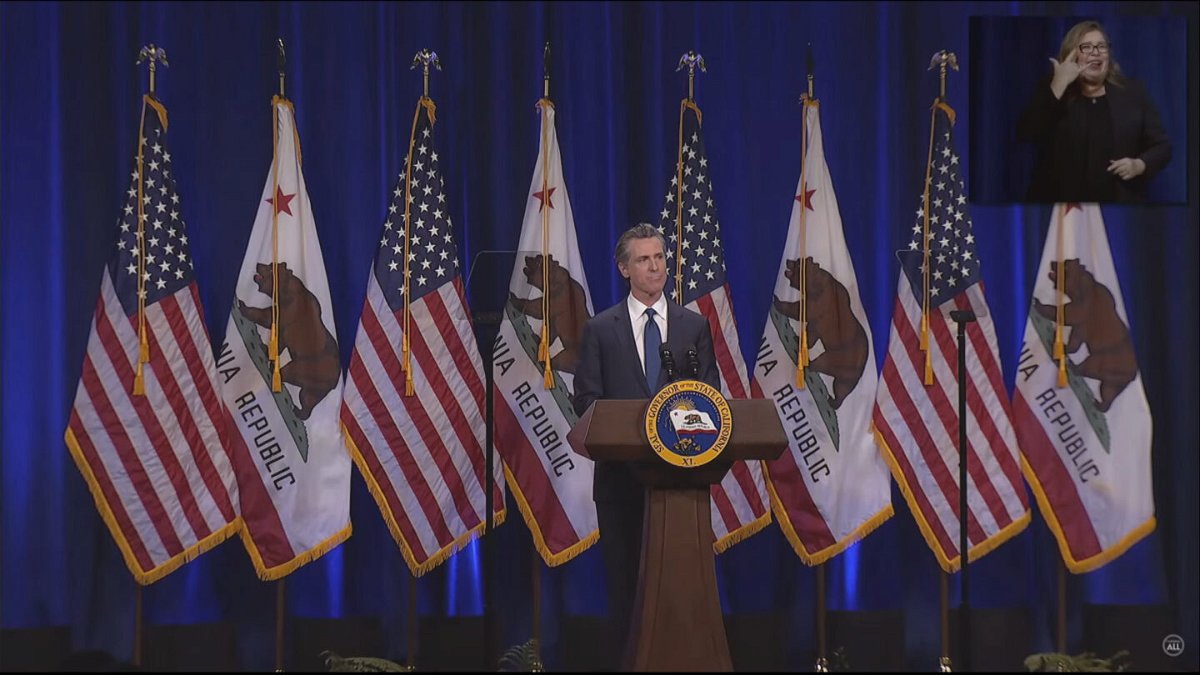California’s governor says state’s budget deficit has grown to nearly $32 billion

By ADAM BEAM
Associated Press
SACRAMENTO, Calif. (AP) — California’s budget deficit has grown to nearly $32 billion, Gov. Gavin Newsom announced Friday, saying the state’s challenges are partly due to high inflation and a decision to let most people delay filing their taxes because of a series of winter storms.
That’s about $10 billion more than Newsom predicted in January, when he offered his first budget proposal. The deficit is part of Newsom’s overall proposal for a $306 billion budget, by far the largest state budget in the nation.
California is one of the only states to have a shortfall this year. That’s mostly because its progressive tax code relies on wealthy taxpayers whose income is closely tied to the performance of the stock market.
In January, Newsom proposed a number of ideas to cover the deficit, including about $9.6 billion in spending cuts that hit some of the state’s ambitious climate programs and other policy areas. His latest proposal includes roughly another $1 billion in spending reductions. Some of that comes from clawing back unspent money in various programs, including those designed to provide tax refunds and help people with their utility bills.
He’s making up the rest of the deficit by shifting expenses, taking some money from the state’s safety next reserve and borrowing.
“This was not an easy budget, but I hope you see we will try to do our best to hold the line and take care of the most vulnerable and most needy, but still maintain prudence,” Newsom said.
Republican legislative leaders blasted Newsom’s proposal as another marker of irresponsible spending by the Democrats who control Sacramento.
“His cuts to drought programs are dangerous, his “fiscal gimmicks” are shortsighted, and his words about good government and efficiency are yet another empty promise. Californians deserve better,” Republican Assembly Leader James Gallagher said in a statement.
The deficit is small compared to the cash crunch that the state faced during the last recession.
Since taking office in 2019, Newsom’s biggest budget fights with the Democratic-controlled state Legislature is how to spend California’s record-breaking surpluses. Agreeing on what to cut could be much more difficult.
Newsom’s plan in January was to cut money for flood protection projects, delaying an expansion of a subsidized child care program and canceling a $500 million plan to help small businesses pay higher tax rates associated with some state debt.
Newsom now plans to restore money for flood protection projects and spend another $250 million on other flood projects, which includes raising a levee to protect the Central Valley community of Corcoran.
It’s not yet clear if he can or will relent on his other proposed cuts. Newsom signed off on an expansion of a subsidized child care program last year that would pay to help an extra 20,000 families. But because of the deficit, Newsom proposed delaying that funding for one year. He argued that the state was having trouble filling the child care slots it already had.
That angered some Democratic lawmakers, who said the reason the state was having trouble filling its child care slots is because there aren’t enough child care workers. On Monday, Democrats in the Assembly proposed $1 billion in new spending to increase the pay of child care workers.
“Now, we just need to put a little pressure on the governor to make sure he’s on board,” Assembly Majority Leader Eloise Gomez-Reyes said on Wednesday while speaking to a rally of parents and child care workers at the state Capitol.
It’s not just child care though. Democrats in the state Senate want to raise taxes on 2,500 of the largest companies so they can cut taxes by about 25% for most other businesses — a plan that Newsom has already said he opposes. And environmental groups want Newsom to reverse his planned $6 billion cut to some of his climate proposals.
Newsom has maintained most of those cuts in his revised proposal.
But he’s also protected spending in other key priority areas, such as expanding Medicaid to everyone who is eligible regardless of their immigration status and allowing people to use Medicaid money to pay for rent. Likewise Newsom said he planned to maintain spending to address the state’s housing and homelessness crisis and K-12 education spending.
There’s also some new spending. Newsom wants to add 14 positions at the California Energy Commission to track and oversee oil prices as part of an effort to crack down on high gas prices. He also wants to redirect 10 existing positions to that project, creating the Division of Petroleum Market Oversight.
California’s budget challenges are due in large part to lower tax collections due to a sagging stock market. About half of the state’s money comes from just 1% of earners. That means that the state is vulnerable to big swings in the stock market, which is the source of wealth for most rich people.
The downward turn has had the biggest impact on California’s massive technology industry as companies like Google, Facebook and PayPal have laid off thousands of workers. Earlier this year, Silicon Valley Bank — one of the nation’s largest financial institutions, whose clients were mostly in the tech industry — failed and was bought by North Carolina-based First Citizens Bank.
A series of intense winter storms that brought widespread damage also prompted state officials to give people until October, not April, to file their taxes.
Delayed tax collection mean Newsom and lawmakers will have to make a plan without knowing how much money they have to spend.



